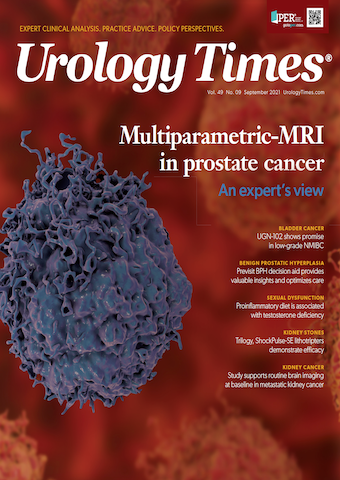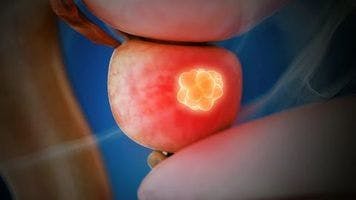Publication
Article
Urology Times Journal
Lithotripters Trilogy and ShockPulse-SE show efficacy for stones
Author(s):
Amy E. Krambeck, MD

In a recent trial comparing the efficacy of Trilogy and ShockPulse-SE lithotripters used in percutaneous nephrolithotomy (PCNL), investigators found that both devices are highly efficient and serve as notable advancements in stone-removal technologies, although fewer device malfunctions were reported when the Trilogy device was utilized.1
In 2017, the ShockPulse-SE was introduced by Olympus America as a unique lithotripter that produces 300 Hz of ballistic force. In 2018, the ultrasonic-ballistic, single-probe lithotripter Trilogy was invented by EMS and Boston Scientific. Trilogy has not been measured against its competitors, thus this study tested Trilogy’s efficacy against ShockPulse-SE.
A prospective multi-institutional randomized control trial was conducted over the course of 16 months. One hundred standard PCNLs were performed using either a Trilogy (n = 51) or ShockPulse-SE (n = 49) lithotripter on patients who were over the age of 18 with stones greater than or equal to 20 mm in diameter or lower pole stones greater than 15 mm. All procedures were performed in 3 high-volume tertiary stone institutions where ShockPulse-SE was the favored lithotripter for greater than 24 months.
Between February 2019 and June 2020, the investigators compared the stone clearance time, stone clearance rate, device malfunction, stone-free rates, and complications between the Trilogy and ShockPulse-SE lithotripters. Assessments were provided via immediate postoperative RedCap survey by 7 primary surgeons, all of whom were required to have performed at least 10 PCNLs with both lithotripters to ensure proficiency.
Quantitative Stone Analysis Software determined the mean stone value at 4.18 +/- 4.79 and 3.86 +/- 3.43 cm3 for the Trilogy and ShockPulse-SE groups, respectively. Stone clearance rates were found to be 101.3 +/- 92.5 and 83.7 +/- 69.3 mm2/min (1.22 +/- 1.67 and 0.77 +/- 0.68 sm3/min) for Trilogy and ShockPulse-SE (P = .0542), respectively.
In an interview with Urology Times, lead study investigator Amy E. Krambeck, MD, discussed how the study results would affect her clinical practice.
“For harder, more aggressive stones, I'm more likely to use the Trilogy based on the results of the study. If I have a softer, easier stone, I prefer the lightness of the ShockPulse—so I'm probably going to use the ShockPulse for something that doesn't require all the power that's necessary behind the Trilogy,” said Krambeck, professor of Urology, Department of Urology, Northwestern University, Feinberg School of Medicine.
In addition, a multivariate analysis estimated the total OR times at 104.4 +/- 48.2 minutes and 121.1 +/- 59.2 minutes for Trilogy and ShockPulse-SE (P = .126), respectively. Also measured were rates of secondary procedures (17.65% vs 40.81%; P = .005), and device malfunctions (1.96% vs 34.69%; P <.001). There was no difference in final stone-free rates among the lithotripters.
At a 6-12 week follow-up rate, no complications were reported as a direct result of the lithotripters. Compared with Trilogy, however, the investigators observed higher rates of secondary procedures for residual stones after ShockPulse-SE lithotripsy (17.7% vs 34.7%; P = .005, respectively)
“Overall surgeon satisfaction with both lithotripters was high (8.69 +/- 0.87 and 8.42 +/- 1.77; P = .340; Trilogy vs ShockPulse-SE). However, the Trilogy probe has previously been criticized as being heavy, leading to decreased surgeon satisfaction,” Krambeck and her coinvestigators wrote in their article.
Reference
1. Large T, Nottingham C, Brinkman E, et al. Multi-institutional prospective randomized control trial of novel intracorporeal lithotripters: ShockPulse-SE vs Trilogy trial [published online ahead of print August 16, 2021]. Journal of Endourology. doi:10.1089/end.2020.1097



























